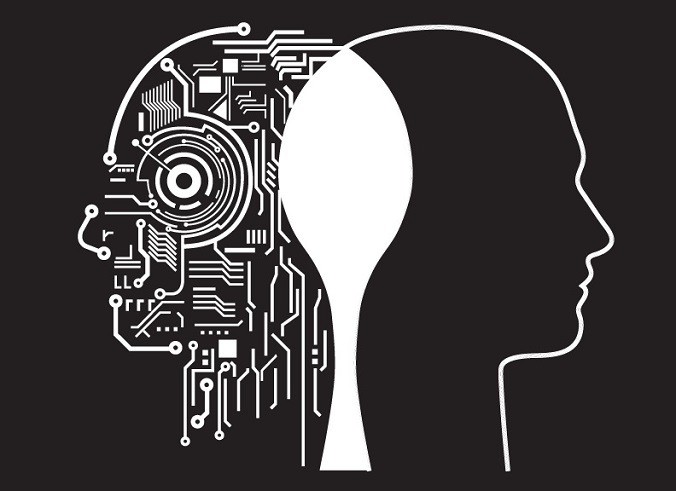Is artificial intelligence too generic? Maybe we should be talking more about machine intelligence and less about artificial intelligence. How do we discover the theory of trust and reasoning for advanced autonomous A.I. systems?
Does automatic and seamless learning occur with machine intelligence? The world of machine intelligence spans industries, platforms and functions which can add value to your business.
Autonomous systems have been used in the air, ground and sea with far-reaching industrial applications. Many of these were governmental, and while they could be applied to the private sector, there wasn’t a strong demand. The private sector is starting to ask more questions. We’ll cover a few today: What is machine learning? What are the approaches for machine learning? And where is machine learning practically being used?
What is machine learning?
Computers don’t learn on their own; they must be taught. Statistical methods drove the pioneering of machine learning using basic algorithms. Initial models had questionable effectiveness during the A.I. winter of the 1970s. This period marked the peak of the hype cycle for machine learning; big things were thought to be just ahead and around the corner. Despite driving faster around those corners, it wasn’t until 2010 that machine learning achieved the level of respect it deserved.
The catalyst for machine learning was a resurgence of backpropagation, a method of training or teaching artificial neural networks. This technique is combined with optimization methods. The value of this process was that it redefined learning as an optimization problem for neural networks.
Neural networks are a computer system modeled on the human brain and nervous system. This algorithm was introduced in 1970 but wasn’t made famous until 1986, in an article in Nature by David Rumelhart, Geoffrey Hinton and Ronald Williams. The crux of the paper described how neural nets could be used to self-organize to solve previously unsolvable problems. It’s a heavily mathematical paper that highlights how computers learn and why learning is the backbone of neural networks.
Machine learning still requires learning, and that learning is done through algorithms. The better the algorithm, the faster the computer learns. When you purchase machine learning products, services or interactions you’re buying a machine learning engine. Try to buy a smart engine.
What are the approaches to machine learning?
Whether you’re trying to get a machine to recognize an apple or process claims with machine intelligence, there are 15 approaches to help machines learn.
First, decision tree learning uses decision trees and predictive models to map observations. Second, association rule learning helps to discover the relationships between arguments in large data sets. Third, artificial neural networks are learning algorithms, modeled off the biological neural networks to aid in connections and computations. Fourth, deep learning is used to process more complex environments such as sight and sound. Fifth, inductive logic programming uses logic as the base input for hypotheses. Sixth, support vector machines are a set of related supervised learning methods used for classification and regression. Seventh, group observations are clustered into subsets (called clusters) to more easily represent similar or dissimilar observations, driven by statistical data analysis. Eighth, Bayesian networks derive from probabilistic graphical models that represent relationships. Ninth, reinforcement learning connects actions to an environment tied to a reward. Tenth, representation learning seeks to discover better representations provided during training. Eleventh, similarity and metric learning use pairs that are similar and less similar to predict if new objects are similar. Twelfth, sparse dictionary learning represents datum as a linear combination of basic functions. Thirteenth, genetic algorithms mimic natural selections with search heuristics to find real solutions to problems using concepts such as mutation and crossover to generate a new genotype to solve problems. Fourteenth, rule-based machine learning identifies, learns or evolves rules to store, manipulate or apply knowledge. Fifteenth, learning classifier systems are collections of rule-based machine learning algorithms that have a discovery component and learning component (supervised learning, reinforcement learning or unsupervised learning).
Where is machine learning being used?
Machine intelligence is being used by Facebook and API.ai to expand your personal space. Howdy, X.ai, Clara and Kasisto are applying machine intelligence to stretch your professional space. Commercial platforms are also emerging, including research, full stack capabilities, industrial IOT, audio, vision and data enrichment.
It’s exciting to consider the impact to healthcare. Every industry is getting curious about how it can leverage machine learning, including advertising technology (AdTheorent, Dstillery, Tapad), agriculture (BlueRiver, Tule, TerrAvion), retail (InVenture, Earnest Machine, Lenddo), legal (Everlaw, Ravel Law, Seal Software), manufacturing (Zymergen, Ginkgo Bioworks, Sight Machine ), education (Knewton, Udacity, Gradescope), transportation and logistics (Preteckt, ClearMetal, Nauto) and finance (Quantopian, Kensho, iSentium).
Machine learning is becoming the default tool for data science, giving organizations new insights into customer behavior.
Peter B. Nichol, empowers organizations to think different for different results. You can follow Peter on Twitter or his personal blog Leaders Need Pancakes or CIO.com. Peter can be reached at pnichol [dot] spamarrest.com.
Peter is the author of Learning Intelligence: Expand Thinking. Absorb Alternative. Unlock Possibilities (2017), which Marshall Goldsmith, author of the New York Times No. 1 bestseller Triggers, calls “a must-read for any leader wanting to compete in the innovation-powered landscape of today.”
Peter also authored The Power of Blockchain for Healthcare: How Blockchain Will Ignite The Future of Healthcare (2017), the first book to explore the vast opportunities for blockchain to transform the patient experience.
